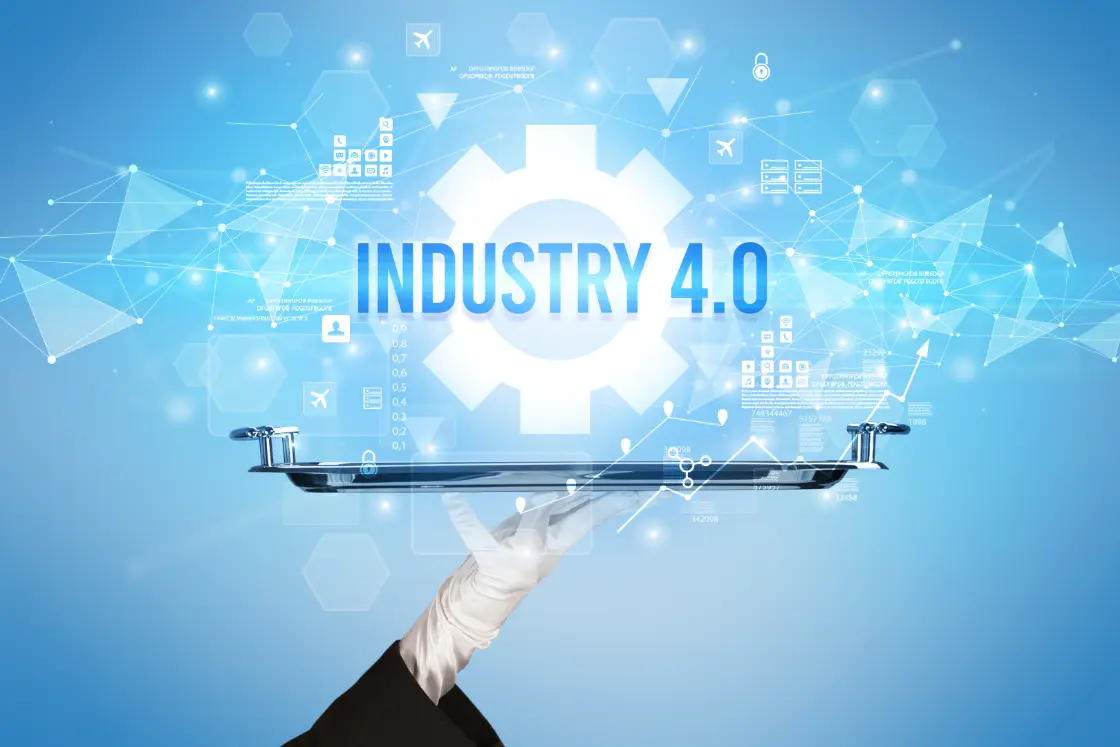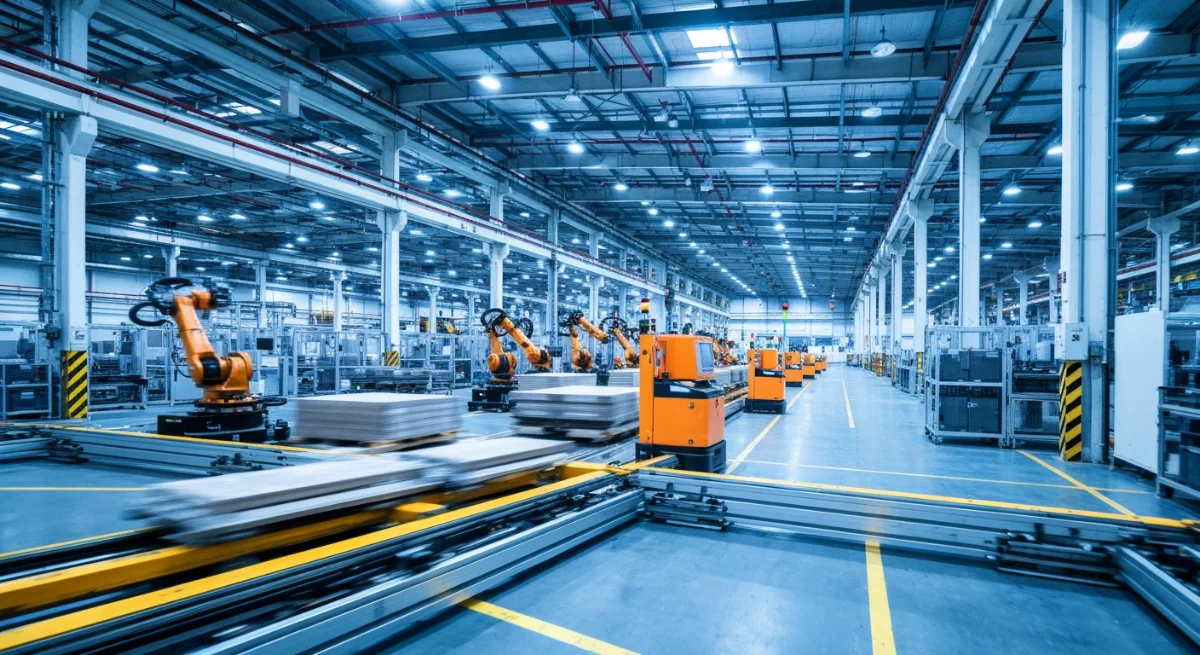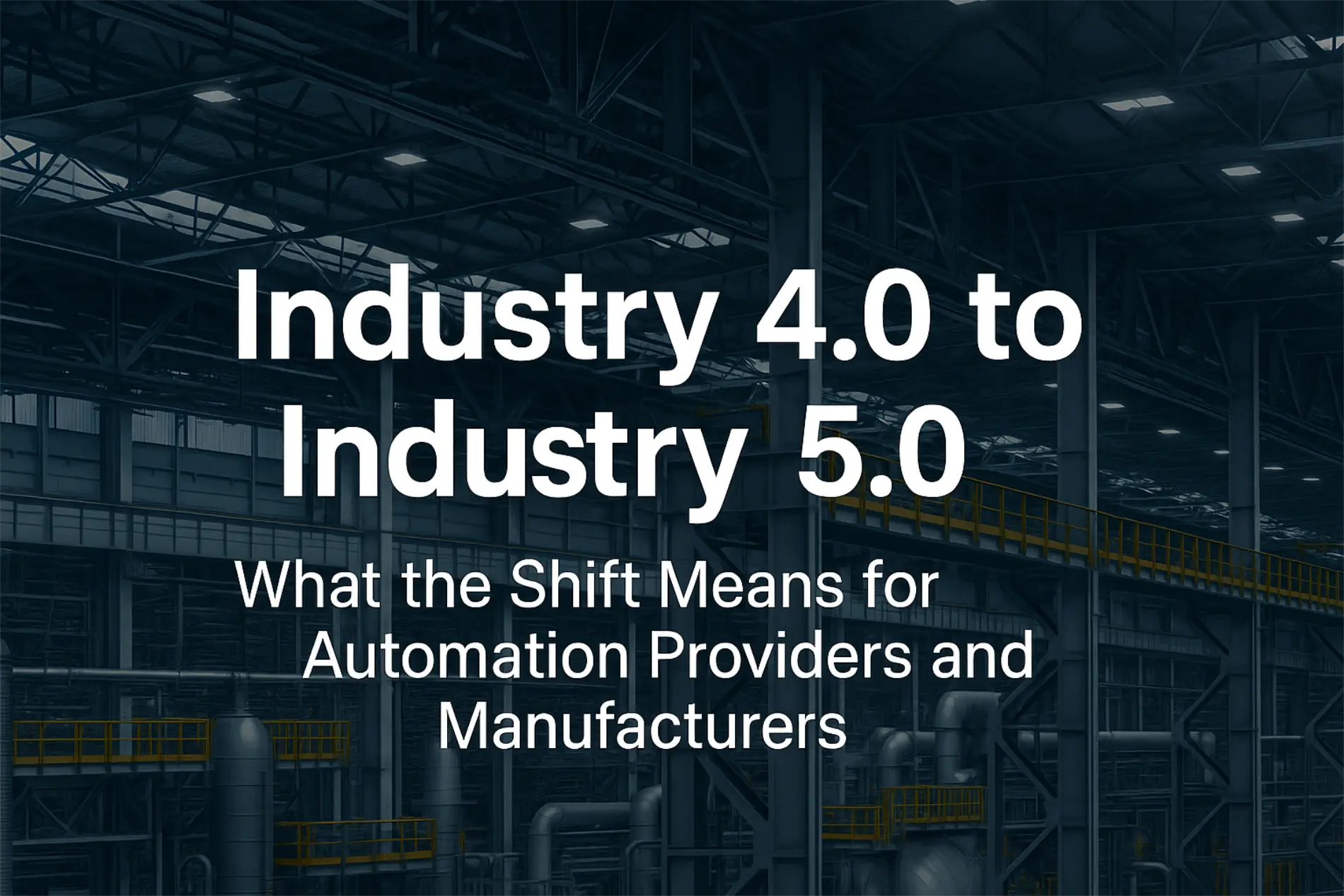Industry 4.0 Strategies to Propel Your Business
As a manufacturing executive, you’ve likely heard the Industry 4.0 buzz for years. Smart factories, IoT sensors, predictive analytics—the promises are compelling, but the path forward often seems overwhelming. How do you modernize decades-old control systems without shutting down production or breaking the budget? After helping over 200 manufacturers navigate this transition, I’ve learned that success lies not in dramatic overhauls, but in strategic, phased approaches that build momentum while delivering immediate value.
The reality is that most manufacturers can’t afford to rip and replace their entire infrastructure overnight. The good news? You don’t need to. Smart Industry 4.0 integration respects your existing investments while creating pathways for continuous improvement. Let me share the proven strategies that forward-thinking manufacturers are using to future-proof their operations without the massive upfront costs.
Understanding Your Current State: The Foundation of Smart Modernization
Before diving into shiny new technologies, you need a clear picture of what you’re working with. Most manufacturers have a patchwork of systems accumulated over decades—some PLCs from the 1990s still running critical processes, newer HMIs that don’t talk to older equipment, and isolated data silos that prevent holistic optimization.
This isn’t a problem to be ashamed of; it’s the reality of successful manufacturing operations that have evolved over time. The key is turning this complexity into an advantage through strategic integration rather than wholesale replacement.
Start by conducting a comprehensive audit of your existing control systems. Document not just what equipment you have, but how it communicates, what data it generates, and where the gaps exist. I’ve seen companies discover hidden gems—sensors already collecting valuable data that simply wasn’t being utilized, or communication protocols that could be leveraged for broader connectivity.
The most successful modernization projects begin with understanding that your current systems contain tremendous untapped value. The goal isn’t to replace everything, but to connect, enhance, and optimize what you already have while strategically upgrading components that offer the highest return on investment.
Data Collection and Analytics: Starting Small, Thinking Big
Data is the foundation of Industry 4.0, but the common mistake is trying to collect everything at once. Instead, focus on what I call “high-value, low-hanging fruit”—data points that are easy to capture and directly impact your key performance indicators.
Begin with your most critical production lines or processes. Identify the top three metrics that, if improved by even 5-10%, would significantly impact your bottom line. This might be overall equipment effectiveness (OEE), energy consumption, or quality metrics. Then work backward to determine what data you need to collect to influence these metrics.
Modern edge computing devices can bridge the gap between legacy equipment and modern analytics platforms. These industrial gateways can communicate with older PLCs and sensors using their native protocols while translating that information into modern formats for cloud-based analytics. The investment is relatively modest, but the insights can be transformational.
Consider temperature monitoring as an example. Many manufacturers already have temperature sensors throughout their facilities, but the data often exists only as local displays or simple alarms. By aggregating this information and applying analytics, you can identify patterns that predict equipment failures, optimize energy usage, and improve product quality. One client reduced their energy costs by 15% simply by using existing temperature data to optimize HVAC schedules and identify heat loss areas.
The key is to start with analytics that provide immediate actionable insights rather than creating data dashboards that look impressive but don’t drive decisions. Focus on predictive maintenance opportunities, quality optimization, and energy efficiency—areas where data-driven decisions can quickly pay for the technology investment.
Cloud Connectivity: Balancing Accessibility with Security
Cloud integration is often where manufacturers hesitate most, and rightfully so. Connecting operational technology (OT) to information technology (IT) – read more about this here – networks introduces new risks and complexities. However, cloud connectivity also unlocks capabilities that are impossible to achieve with purely local systems.
The solution lies in implementing proper network segmentation and security protocols from the beginning. Create isolated networks for your operational technology, with carefully controlled gateways to cloud services. This approach allows you to gain the benefits of cloud analytics and remote monitoring while maintaining security and reliability.
Start with non-critical systems to build confidence and expertise. Remote monitoring of utility systems, environmental conditions, or secondary processes can provide valuable experience with cloud integration without risking primary production systems. As your team becomes comfortable with the technology and security protocols, you can gradually expand connectivity to more critical systems.
Cloud platforms excel at aggregating data from multiple facilities, enabling enterprise-wide optimization that’s impossible with isolated local systems. Imagine comparing energy efficiency across all your facilities in real-time, or using machine learning algorithms trained on data from your entire operation to predict maintenance needs at individual sites.
The hybrid approach—keeping critical control functions local while leveraging cloud capabilities for analytics and optimization—offers the best of both worlds. This strategy allows you to maintain operational independence while gaining access to advanced analytical capabilities that would be prohibitively expensive to implement locally.
Cybersecurity Considerations for Connected Systems
The intersection of operational technology and information technology creates new security challenges that manufacturers must address proactively. Traditional IT security models don’t always translate directly to industrial environments where availability and real-time performance are paramount.
Develop a cybersecurity strategy that acknowledges the unique requirements of manufacturing operations. This means implementing defense-in-depth approaches that include network segmentation, secure remote access protocols, and regular security assessments specifically designed for industrial environments.
Employee training is crucial but often overlooked. Your maintenance technicians and operators need to understand how their actions can impact cybersecurity. Simple practices like secure password management, recognizing phishing attempts, and following proper protocols for connecting devices to operational networks can prevent the majority of security incidents.
Consider working with cybersecurity firms that specialize in industrial environments. They understand the balance between security and operational requirements and can help you implement protective measures that don’t interfere with production processes.
Regular security assessments should become part of your operational routine, just like preventive maintenance. The threat landscape evolves constantly, and your security measures need to adapt accordingly. This doesn’t require expensive consultants for every assessment—many security practices can be implemented and monitored by your existing team with proper training and tools.
Planning Upgrades That Won’t Become Obsolete
The pace of technological change means that any system you implement today will eventually need updating. The key is designing your modernization strategy around standards and protocols that have longevity, while maintaining flexibility for future enhancements.
Invest in communication protocols and standards that have broad industry support. Open standards like OPC UA, MQTT, and Ethernet/IP provide better long-term viability than proprietary protocols. While proprietary solutions might offer short-term advantages, they often create lock-in situations that limit your future options.
Modular architectures are your friend. Instead of monolithic system upgrades, design improvements around modular components that can be upgraded independently. This approach reduces risk, spreads costs over time, and allows you to adopt new technologies as they mature without overhauling entire systems.
Consider the total cost of ownership, not just initial purchase prices. Systems that are cheaper upfront but require expensive proprietary software licenses, specialized training, or limited vendor support options often cost more over their lifetime than higher-quality alternatives with broader ecosystem support.
Plan for scalability from the beginning. It’s much easier to expand a well-designed system than to retrofit scalability later. This means choosing hardware with growth capacity, software platforms that can handle increased data volumes, and network architectures that can accommodate additional devices and traffic.
Building Internal Capabilities
Technology alone doesn’t create smart factories—people do. Investing in your team’s capabilities is just as important as investing in new equipment. The most successful Industry 4.0 implementations combine new technology with enhanced human expertise rather than trying to automate people out of the equation.
Cross-training between maintenance, operations, and IT teams creates the collaborative foundation necessary for modern manufacturing operations. When maintenance technicians understand basic networking concepts and IT professionals understand production processes, troubleshooting and optimization become much more effective.
Develop partnerships with technology vendors who offer training and support, not just products. The vendors who invest in your team’s success are the ones who will help you maximize the value of your technology investments over time.
Consider starting pilot projects that allow your team to gain experience with new technologies in low-risk environments. These learning opportunities build confidence and expertise that will be invaluable when implementing larger-scale improvements.
Measuring Success and Continuous Improvement
Establish clear metrics for success before implementing any new technology. While it’s tempting to focus on technology-centric metrics like data collection rates or system uptime, the most important measurements are business outcomes: reduced downtime, improved quality, lower costs, or increased throughput.
Create feedback loops that allow you to learn and adjust your approach based on actual results. The most successful manufacturers treat Industry 4.0 implementation as an ongoing journey rather than a destination. They continuously evaluate what’s working, what isn’t, and where the next opportunities lie.
Document your successes and failures to build institutional knowledge. This documentation becomes invaluable when planning future projects and helps justify continued investment in modernization initiatives.
Your Industry 4.0 Readiness Assessment
Use this checklist to evaluate your organization’s readiness for Industry 4.0 integration:
Infrastructure Assessment:
- Current control systems documented and communication protocols identified
- Network infrastructure capable of supporting additional data traffic
- Cybersecurity policies and procedures appropriate for connected systems
- Existing data collection capabilities catalogued and evaluated
Organizational Readiness:
- Cross-functional team identified with representation from operations, maintenance, IT, and management
- Budget allocated for gradual modernization rather than large upfront investment
- Training plan developed for staff who will work with new technologies
- Success metrics defined and measurement systems in place
Technology Strategy:
- Pilot project identified that can demonstrate value with limited risk
- Vendor partners selected based on long-term support and open standards
- Integration plan developed that respects existing investments
- Scalability requirements defined for future expansion
Next Steps Action Plan:
- Week 1-2: Complete infrastructure audit and identify your top three improvement opportunities
- Week 3-4: Research technology solutions and potential vendor partners
- Month 2: Develop detailed pilot project plan with clear success metrics
- Month 3: Begin pilot implementation with selected vendor partner
- Month 4-6: Evaluate pilot results and plan next phase of implementation
The future of manufacturing belongs to companies that can successfully blend proven operational excellence with smart technology integration. By taking a strategic, phased approach to Industry 4.0 adoption, you can modernize your operations while respecting your existing investments and budget constraints.
The manufacturers who thrive in the coming decade won’t necessarily be those with the most advanced technology, but those who most effectively use technology to enhance their operational capabilities. Start your journey today with small, strategic steps that build toward your long-term vision of smart manufacturing excellence.
Ready to develop your Industry 4.0 strategy? I help manufacturers navigate the transition from traditional to smart operations through practical, cost-effective approaches that deliver measurable results. Schedule a consultation to discuss how these strategies can be tailored to your specific operational challenges and opportunities. – Contact Us Today To Get Started








